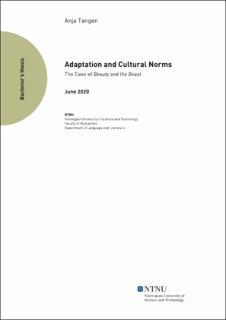| dc.description.abstract | Through the story of Beauty and the Beast, Disney have been indirectly been relaying their values and shown progressiveness. Disney made the story their own through their first adaptation in 1991, where they adapted the story to fit their usual “Disney-format” and was even hailed for its progressive portrayal of a princess more interested in books than men. But, seen through a critical lens, even this adaptation could be criticized for the female character losing her individualism throughout the story and zero representation of ethnicity and sexual orientation. 26 years later, society calls for more inclusion and cultural representation in the cinematic world. Disney responds to the demand; they take responsibility for previous animation and adaptations, while starting a remake franchise to right their wrongs. Condon’s Beauty and the Beast has tried to retell the animated version in a new cultural light; Making it both familiar and nostalgic and new and progressive film. | |
